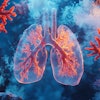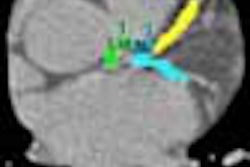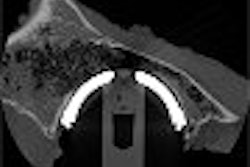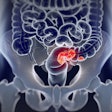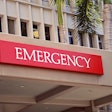SAN FRANCISCO - The use of pediatric head CT for trauma evaluation increased steadily during the 1990s. By the end of the decade, CT was being used in nearly half of all head trauma evaluations, according to a new study based on the National Hospital Ambulatory Care Survey (NHAMCS), presented Saturday at the annual meeting of the Pediatric Academic Societies.
“Recently, concerns have been raised about the possible overuse of CT scanning in children with minor head injuries, with associated increases in medical care costs and radiation exposure, as well as the risks of sedation,” said Dr. Charles D. Blackwell, Instructor of Pediatric Emergency Medicine at the Medical College of Wisconsin in Milwaukee. “A better understanding of practices and trends in the evaluation of children with head trauma will inform ongoing efforts to optimize the use of CT and other resources.”
Head trauma is common in the pediatric age group (0-18), he said, and variations in patient management among different emergency rooms are likely in the absence of evidence-based recommendations. The study by the Medical School of Wisconsin in Milwaukee and the University of California, School of Medicine in Davis, California, was a cross-sectional analysis of the NHAMCS ED database from 1992 through 2000.
Patients were identified by their chief complaint of head trauma, and/or the discharge diagnosis. Data were also collected on the use of sedative medications and patient disposition. Emergency facilities were divided into two categories, academic or non-academic, and were also separated into the categories of pediatric (15% of patients) or general emergency department (85% of patients).
“The data analysis included scripted statistics and logistic regression using head CT as the primary outcome,” Blackwell said. The numbers were also parsed for patient demographics, he said, with patient disposition “used as a surrogate indicator of the severity of illness.”
In all, 1,247 patients were diagnosed with head trauma during the nine-year period. These diagnoses were gleaned from 5,093,864 patient encounters among a total of 250 million patient visits over the period of the study. Fifty-one percent of patients were evaluated in metropolitan areas.
While the number of visits remained stable throughout the reporting period, the use of head CT increased from 23.9% to 46% between 1992 and 2000 (p=0.001). In addition, head CT was used more frequently in the older age groups: Children 0-4 years of age had 15.9% of the scans, children 5-10 years of age had 37.7% of the scans, and patients 11-18 years of age had 45.9% of the scans, he said.
Despite some annual fluctuations, the rate of head CT compared to the rate of admission remained stable at 9.8% between 1992 and 2000. “An average of 9.8% of patients were either admitted or transferred,” Blackwell said.
A multivariate analysis showed that the factors affecting admission included age (adjusted odds ratio 1.06 95% CI 1.01-1.10), non-Hispanic Caucasian parents compared to other racial and ethnic groups (AOR 2.56, 95% CI, 1.16-5.63), and teaching compared to non-teaching institutions (AOR 2.51, 95% CI 1.33-4.73).
Sedative medications, including hypnotics and anti-anxiety agents, were used very little, and mostly in children younger than five years (3.93% of the youngest patients). However, 1.8% of all children younger than five who did not undergo head CT were given a sedative.
Blackwell cautioned that the cross-sectional analysis of previously collected study data means the research is “limited in its clinical scope with respect to clinical information. As such, the most common indicator of patient severity, the Glasgow Coma Score, was not reported. This requires the use of patient disposition as a surrogate marker for the severity of the condition.”
Logistical regression analysis showed four trends associated with the use of head CT. “The use of head CT increased by 15% per year from 1992 to 2000,” he said. “Increasing patient age also had a significant effect, with the use of CT increasing cumulatively 10% per year of age. Children who were admitted were almost seven times as likely to have had a CT. On the other hand, pediatric emergency departments were (48%) less likely to obtain a head CT as the general emergency departments. The rate of CT use was not significantly affected by ethnicity, sex, geography, region,” or academic versus non-academic emergency department.
Between 1992 and the end of 2000, CT use increased steadily despite the stability of admission rates for head trauma, Blackwell said. “Moreover, there is an important variation in the use of CT among different age groups and different hospital types. Specifically, the increasing use of CT in day-to-day practice, and less use of CT scanning in pediatric facilities” (AOR 0.47, 95% CI 0.24-0.91).
“Additional clinical studies will be required to understand the trends observed in the NHAMCS database,” he said. “These findings highlight the need for effective clinical criteria for the use of head CT in children presenting with head trauma.”
An audience member commented that with increasing use of multislice scanners, CT exams are becoming easier and faster. As a result, he said, the use of sedatives might be expected to fall even further in the future. Another attendee suggested that the principal reason for greater use of CT among older kids may be the higher relative severity of their accidents.
“I would think that a lot of the younger kids would come with falls and minor kinds of head trauma, as opposed to the older kids, when they’re driving motorcycles and they’re driving cars and they’re drunk,” the attendee said. "That may account for the larger numbers.”
By Eric Barnes
AuntMinnie.com staff writer
May 5, 2004
Related Reading
Part II: Imaging the pediatric patient: diagnostic radiography, April 26, 2004
Part I: Imaging the pediatric patient: Beyond the smiles and stickers, April 22, 2004
Misread scans often lead to osteoporosis diagnosis in children, March 22, 2004
PET/CT brings added value to pediatric oncology, February 27, 2004
Ultrasound, CT, or MRI best for pediatric foot toothpick puncture injuries, February 25, 2004
Pediatric CT won't stop growing, but dose can be minimized, May 8, 2003
Copyright © 2004 AuntMinnie.com


